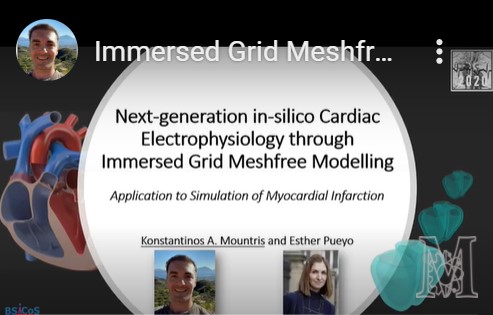Outstanding Young Researcher Award at ICESS 2021 to Konstantinos Mountris (NANBIOSIS U27).
Konstantinos Mountris researcher from the BSICoS group of CIBER-BBN and I3A at the University of Zaragoza has been granted the Outstanding Young Researcher Award at the International Conference on Computational & Experimental Engineering and Sciences (ICCES) in relation with the work Radial Point Interpolation Mixed Collocation (RPIMC) Method for The Solution of Reaction-Diffusion Equation in Cardiac Eletrophysiology (for the simulation of myocardial infarction).
This work was already recognized in the Congress of Computing in Cardiology (CinC) held recently where Konstantinos Mountris and Esther Pueyo have received the Maastricht Simulation Award (MSA). Konstantinos Mountris acknowledged the contribution of NANBIOSIS U27 High Performance Computing :“using the HPC services of NANBIOSIS U27 we were able to validate the RPIMC method as a promising alternative to Finite Element Method performing large-scale simulations of myocardial infarction in biventricular swine models“
Related news: Understanding human heart behaviour with mathematics and engineering.










